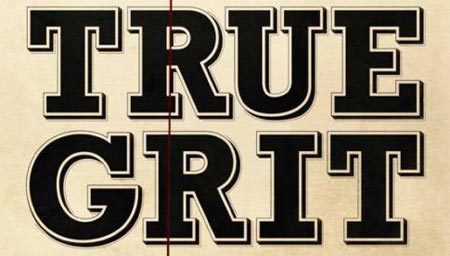Like They Used to Make Them
by Brian Crane
1.
The Coen brothers have immense narrative gifts and a natural sense of genre. They work squarely in the highest traditions of classical cinema. True Grit is a virtuoso performance of this style of filmmaking. The only break from the invisibility of the narration for most of the film is the achingly beautiful landscape photography. Is the image desaturated or the landscape merely colorless?
2.
Despite its classical moorings, the Coen brothers' directorial sensibility is fundamentally anti-narrative. Their films are collections of moments. Miller's Crossing. The Man Who Wasn't There. Barton Fink. Raising Arizona. The Ladykillers. For these and others, set pieces and not story are what remains in memory. (A gun to the head in the woods in Miller's Crossing, a fat man on a bed preaching dry cleaning in The Man Who Wasn't There, a fire and John Goodman with a shotgun in Barton Fink.) It makes sense: the touchstones of the Coen's style are irony, visual spectacle, and a taste for caricature. These invite viewers to set up camp outside the story and laugh.
3.
In their greatest films--Fargo and No Country For Old Men--an actor steps to the fore, creating a sincere, authentic character through a carefully constructed performance. They check the filmmakers' habitual self-consciousness with their commitment to the story and to the coherence of individual experience. Like McDormand's Marge, Hailee Steinfeld's Mattie grounds True Grit's narrative. It's her film, not Bridges's. She keeps the winks and the absurdities and the falling off of horses from taking over. And yet, True Grit is not Fargo, and the power of the film is the Coen's, not hers.
4.
In True Grit's final moments--and it's most powerful sequence--self-consciousness fractures the realism and marginalizes character. Rooster races through the night to save Mattie's life. The sky is dark, the landscape empty, emotions are high. For the first time, movement is conveyed using a rear projection. The primitive artificiality of the device reminds us that this is just a movie. (Rooster's end as a sideshow attraction will hammer the point home.) The result is not, however, irony or laughter, but homage. It is also--and this feels like something new for the Coens--the allegorical expansion of the film. What we've taken to be the tale of a young girl's coming of age becomes a drama of the old proving itself worthwhile, sufficient and then passing its mantel to the young. In this moment, I can't help seeing the Coen brothers--two emblematic indie-auteurs--embracing (finally without irony) the power and richness of a Hollywood tradition they have made a career of conjuring up and then holding at arms length. Here at last, they seem to say, "This is a movie."

No comments:
Post a Comment